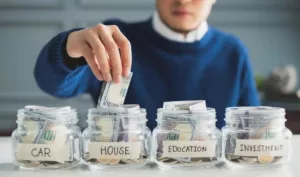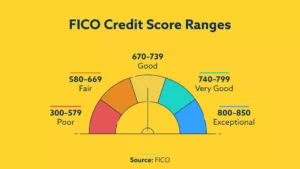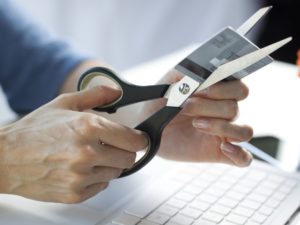Question: I just had a question about a charge off on my credit report. I had a vehicle that was voluntarily repossessed in January. The car was charged off in April and placed on my credit report. The original balance was something like $14k. My Transunion Credit Report is showing that a payment of something like $3,700 was made toward the charge off and now it’s showing a balance of $10k. I never made that payment and I’m not sure if I should try to dispute it or not. It hasn’t been sold to a debt collector either. I’m just unsure of what I should do. Any advice would be appreciated.
Response: It sounds like the lender has sold the vehicle at an auction for a low price. After the vehicle is sold, the sale price is subtracted from what you owe the lender. You are still liable for the remaining balance which is known as the deficiency balance. The current balance of $10K is probably the new balance after the lender sold the vehicle. There isn’t a way to return a financed car without penalty.
The lender or collection agency will eventually contact you about the balance unless you negotiated with the lender to waive the deficiency balance when you voluntarily gave up your vehicle. You also might still have to pay fees associated with the car loan, such as late payment charges.
I would not dispute it at this time unless you believe there has been an inaccuracy in the accounting process. It is common for lenders to make mistakes in the repossession process. Most states bar lenders from collecting a deficiency balance if they fail to comply with state requirements (such as not selling the property in a commercially reasonable manner.)
If you think the lender made a mistake, you can dispute based on that mistake but it might cause the lender to begin collection actions against you.
The best advice I can give you is to contact an attorney in your state. Each state has different laws when it comes to vehicle repossession. It can be a complex issue.
What options do you have when you owe a deficiency balance?
Here are a few options when you owe a deficiency balance on your car after a voluntary repossession:
- Pay the full balance: This is the best option if you can afford it.
- Talk to your lender about a payment plan: If you can’t afford to pay the deficiency balance as a lump sum, communicate that to your lender immediately. You may be able to set up a payment plan.
- Negotiate a settlement: Debt settlement allows you to work with your lender to agree on a lower lump sum payment.
How to avoid voluntary repossession in the future
In the future, when you are ready to finance a car again, there are ways to avoid voluntary repossession when your car becomes unaffordable. Here are some alternatives:
Talk to your lender. Before you fall too far behind on payments, check to see whether you qualify for options that would allow you to keep your car, like a repayment plan or deferral plan where you are allowed to skip payments for a period of time. The skipped payments will be added to your remaining payoff amount, and your loan term will be extended until you finish paying the principal and interest.
Transfer your car loan payments. It may be possible to have someone else assume responsibility for your car by transferring the loan to them. If your loan is transferable, you’ll find a reference to that in its terms and conditions and also contact your lender first to see if this approach is allowed. A trusted friend or family member may be able to take over the loan for a few months until you’re financially solvent again. If that is an option be sure to sign a contract stipulating the length of the contract and how the auto loan will be paid along with insurance for the temporary driver.
Refinance the auto loan. Refinancing the loan can relieve some financial pressure if the interest rate is lower than what you are currently paying. To do this, you’ll likely need to have a FICO® score of 700 or more to get the best auto loan refinancing loan terms.
Sell your car. Try selling your car yourself — especially if the car is worth more than your remaining loan balance. Used-car prices jumped by almost 50% over the course of the COVID-19 pandemic and remain high according to data compiled by CoPilot. You may be able to sell your car and get enough to cover your loan in full.
The best of luck to you.


















